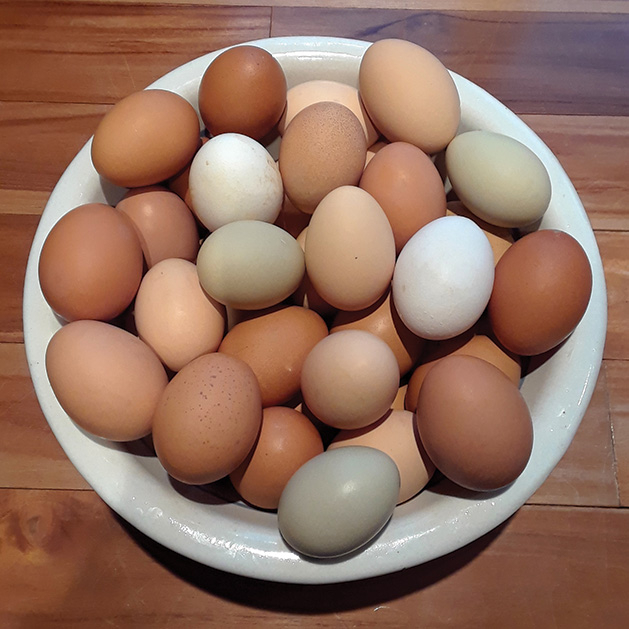
As a child, I thought the Easter bunny laid eggs, usually in the form of chocolate or pink plastic. Only some three decades later, when I started keeping a flock of backyard chickens, did I understand the biological basis for the thrill of spring eggs. I learned all kinds of interesting fowl facts: chickens have no teeth, so they store gravel or pebbles in their craw to help grind up food; they will eat just about every kind of table scrap—including their own eggshells—and convert them into protein with amazing efficiency; and, most relevant to the subject of Easter, they require nearly 12 hours of daylight to lay eggs. So in northern climes, the short winter days mean a dearth of winter eggs (past generations would have extended the shelf life of their chickens’ last fall eggs by mixing them with cream, sugar, and brandy…egg nog anyone?). But with the approach of the spring equinox, chickens resume their laying. Apparently there are no rabbit breeds that actually lay chocolate eggs…so the furry fecund creature is just a symbolic representation of Eostra, the pagan goddess of spring and the return of seasonal abundance. Despite the shattering of the egg-laying bunny myth, I celebrated the way any good Eostra-goddess-worshipping pagan would have…I ate omelets and hard-boiled eggs, crepes and frittatas, and shared a few eggs with my neighbors.
Anne Marie Ruff Grewal is a writer, editor and environmentalist. She serves on the board of the Long Lake Waters Association, and has recently published her second novel, Beneath the Same Heaven.









